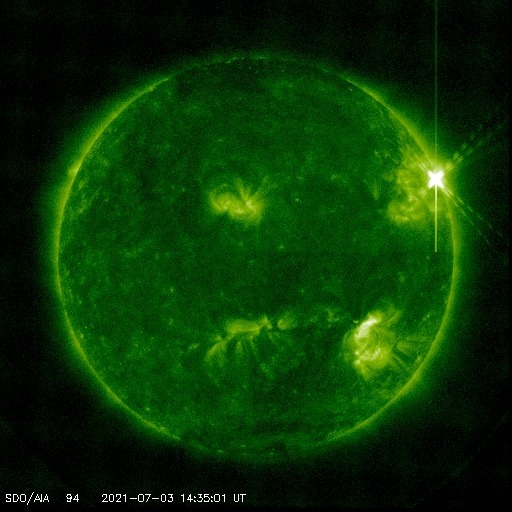This Huge X-Class Solar Flare Shows Why NASA's Sun Study Is So Vital
NASA's Solar Dynamics Observatory has caught a huge flare erupting from the Sun, a 10 million degree Fahrenheit eruption potent enough to disrupt GPS and more. The SDO – which launched in 2010 – continuously monitors the Sun with a trio of instruments, tracking its energy output and magnetic field, and gauging the impact of solar changes on Earth and other parts of the Solar System.
That's because, while the Sun may provide heat and light, it's also capable of significantly disrupting things on Earth too. Strong solar eruptions can cause waves of electromagnetic radiation that impact or even overwhelm GPS, telecommunications, and other satellites.
Figuring out how the solar atmosphere and magnetic fluctuations translate to those powerful waves has been a key part of the SDO mission. It's also capable of snapping images of eruptions, such as the "significant" solar flare which NASA says was observed peaking at 10:29 am EDT on July 3, 2021.

Much like earthquakes are rated by their force on the Richter scale, flares are classified by their X-ray wavelength brightness. The most significant are X-class; M-class flares are medium sized, while C-class flares are small. A number is appended to indicate the relative strength within each classification.
The flare on July 3 was rated as X1.5-class, NASA confirms, the strongest since 2017. That's far from being the most potent ever observed – back in 2003, for example, an X28-class solar flare was recorded, with an eruption of coronal mass at at around 5.1 million miles per hour – though still sufficient to cause issues for objects in orbit, and briefly disrupt radio.
Part of the SDO's mission, then, is to understand just what causes those eruptions – and potentially develop systems more resilient to withstanding their effects. Back in March 2021, a so-called "Rosetta Stone Eruption" was captured by the SDO along with the European Space Agency and NASA's Solar and Heliospheric Observatory. That included three different types of solar eruptions that would more typically occur separately.
"This event is a missing link, where we can see all of these aspects of different types of eruptions in one neat little package," Emily Mason, lead author of a study into the eruption, and a solar scientist at NASA's Goddard Space Flight Center in Greenbelt, Maryland, explained. "It drives home the point that these eruptions are caused by the same mechanism, just at different scales."
It's important, because not only are satellites at risk but potential future crewed missions within the solar system. While Earth's atmosphere provides a layer of protection for life on the ground, shielding humans, animals, and plants outside of that barrier is far harder. Indeed, keeping astronauts safe for trips to Mars and beyond is one of NASA and other agencies key concerns as missions are planned.
While tamping down on solar activity isn't possible, the hope is that better understanding how things like coronal mass ejections (CMEs) form will allow for more warning time. That way, astronauts and spacecraft could gain valuable preparation time should a sizable CME be forecast.
